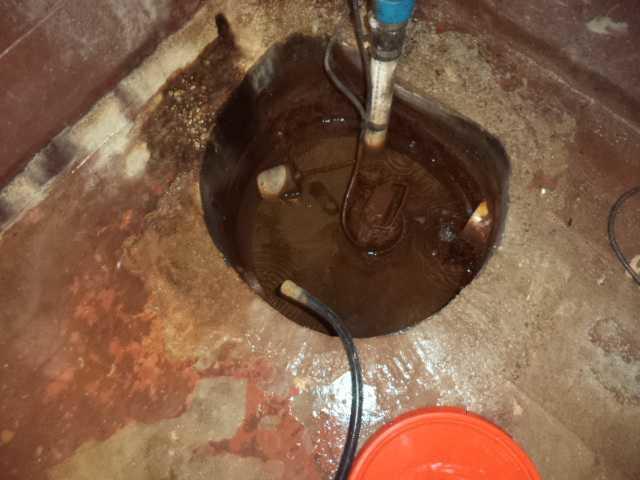
Sump Pump Can't Keep Up with Heavy Rain
Sump pumps are great. But without a drainage system, they are at the mercy of gravity to actually collect all the water and discharge it. This often results in a lot of standing water.

Floor Drain with Iron Ochre Problem
It may only look like rust, but the discoloration you see here is largely iron ochre bacteria. You'll get a better shot of it in the next photo (put down anything you're eating).

Iron Ochre Limits Drain Efficiency
With this kind of sludge buildup, it's difficult for a drainage system to keep up with heavy rains.
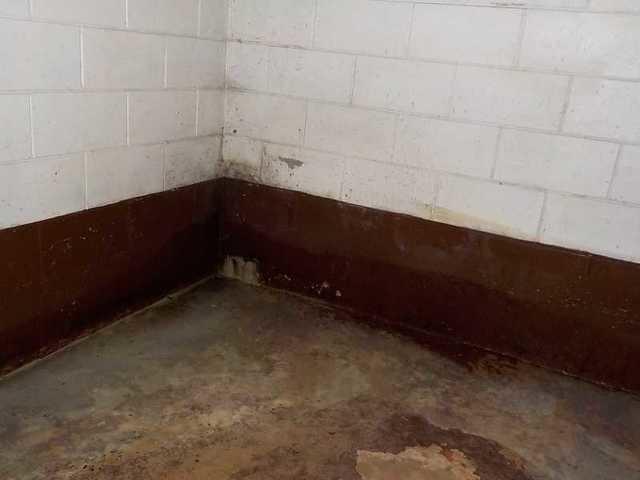
Mold and Water Damage in Basement
Water was coming up through the floor in addition to standing stagnant after rains. Standing water can cause mold problems, like the smattering of black you can see here.
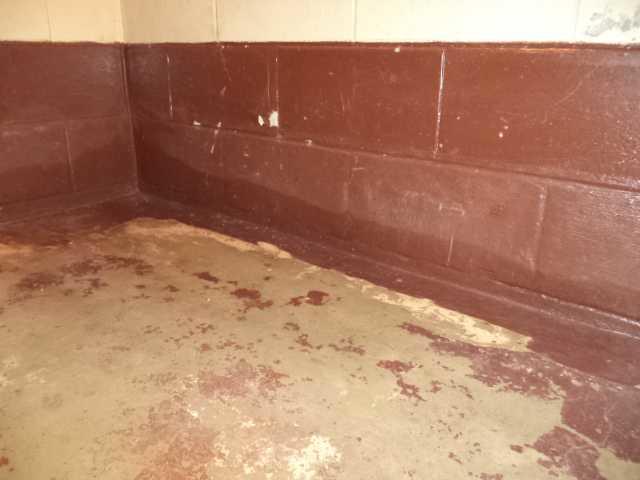
Peeling Paint is a Sign of Water Leaks
Notice how the paint on the floor is mostly gone? That's from water. Water entered through cracks in the floor and ate away at the paint.
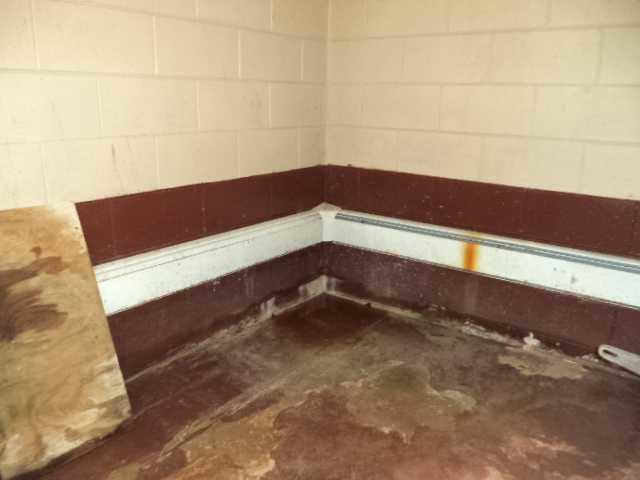
Rust and Water Stains Point to Water Damage
Even if your basement isn't under six inches of water, you can keep your eye out for common signs of water damage to figure out if your basement has a problem. Staining as seen on the floor, and even rust trails from metal fixtures both point to water trouble.
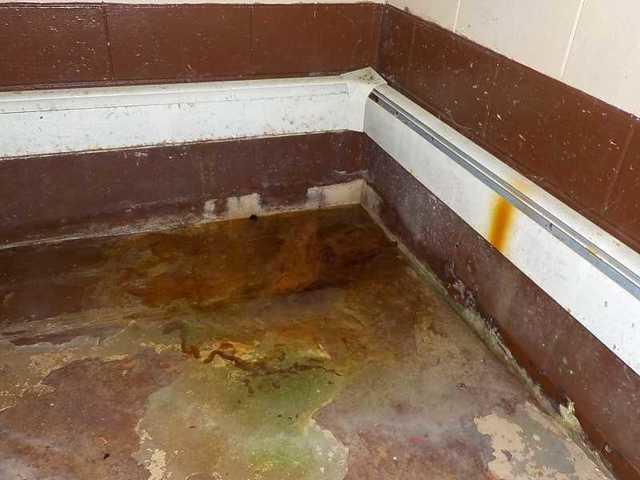
Rust and Discoloration from Standing Water
Water coming through the floor is a major source of discoloration and staining. The high levels of iron in the water (which causes the iron ochre) are also obvious with the deep rust color of the stains.

Drainage Stone Allows for Easy Water Movement
The drainage stone we pour over the WaterGuard track allows water to filter down into the system rather than overwhelming it and backing up.
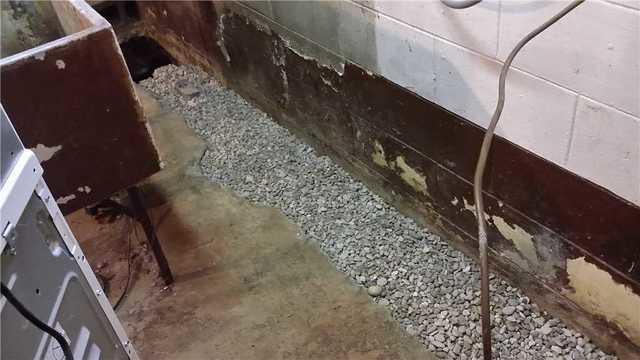
Drainage Stone in Place to Assist Water Drainage
You wouldn't even know there's a whole system at play here.
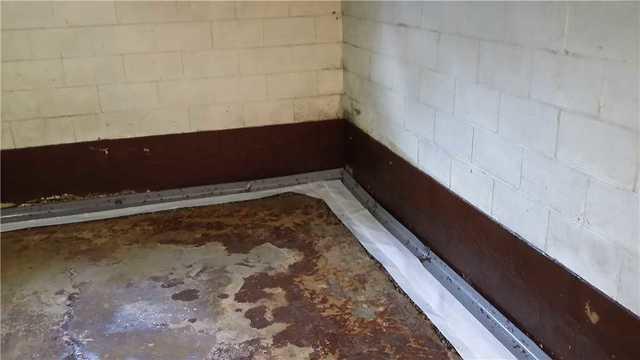
WaterGuard Installation in Progress
By installing the WaterGuard around the entire perimeter of the basement, we can capture all of the water - not just whatever travels downhill to the sump pump.
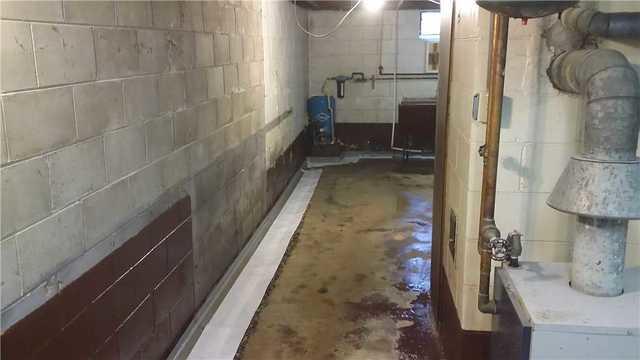
WaterGuard Secured During Installation
After the WaterGuard track is installed, we secure it with the tape shown so we can pour new concrete and restore the floor.
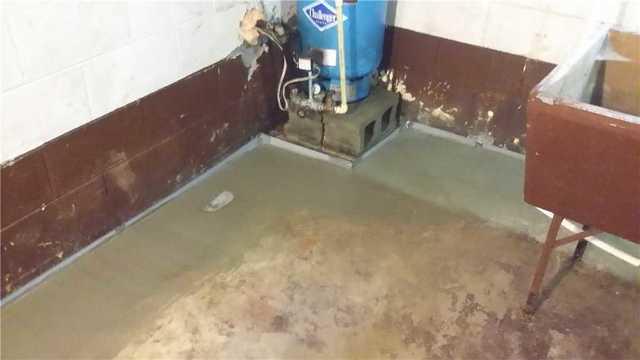
Floor Restored after WaterGuard Installation
After we pour new concrete, the floor is like new - except better, because now it isn't covered in water. The inspection port visible toward the left side of the photo is there so we can get easy access to the WaterGuard system if necessary.
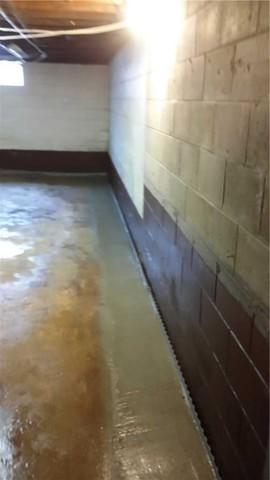
Basement Floor Restored
The only sign something happened - other than the different shade of concrete - is the tiny visible grate at the wall. And that's a lot better than water, water, everywhere.
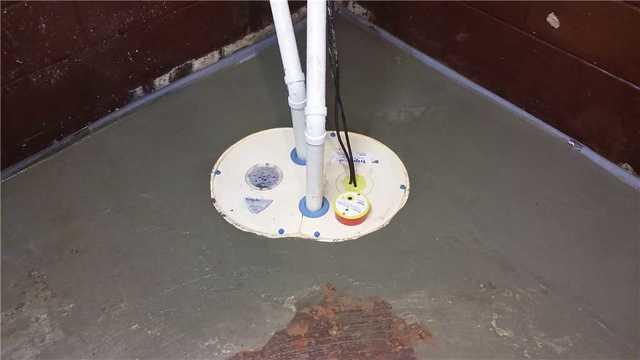
TripleSafe Sump Pump Proactively Removes Water
The TripleSafe has three powerful motors and a battery backup to make sure you're never under water.
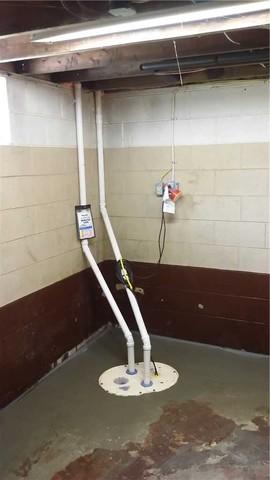
Discharge Lines Evacuate Water
The new discharge lines will carry the water a safe distance from the house, preventing it from simply soaking back in to the foundation.

IceGuard Prevents Winter Backups
The line itself is buried, but here you can see the IceGuard covers that prevent water from backing up into the basement in the event of a frozen discharge line. The water will instead exit via the grate.









